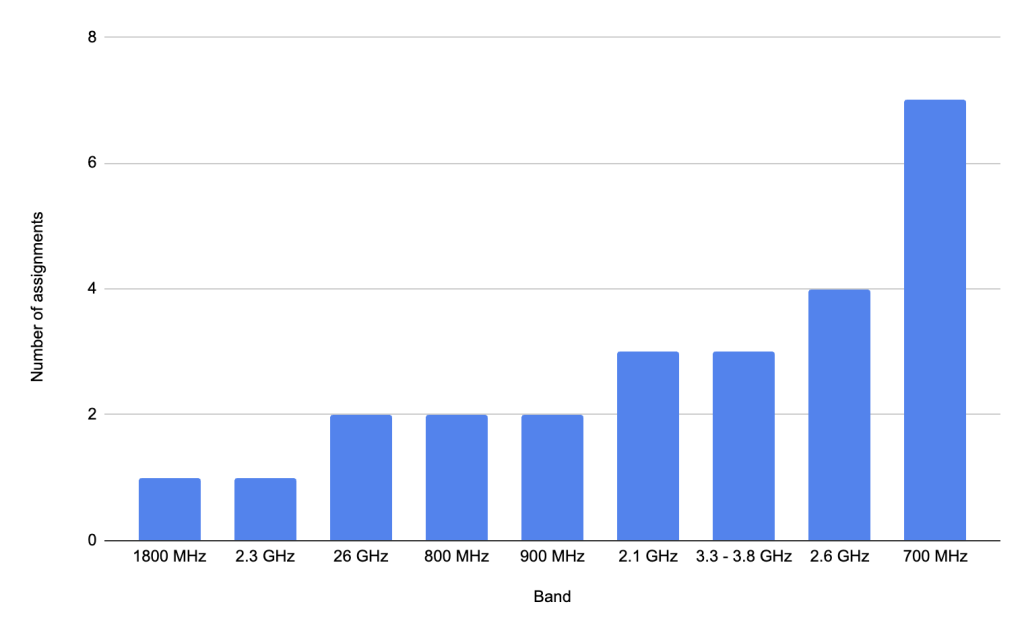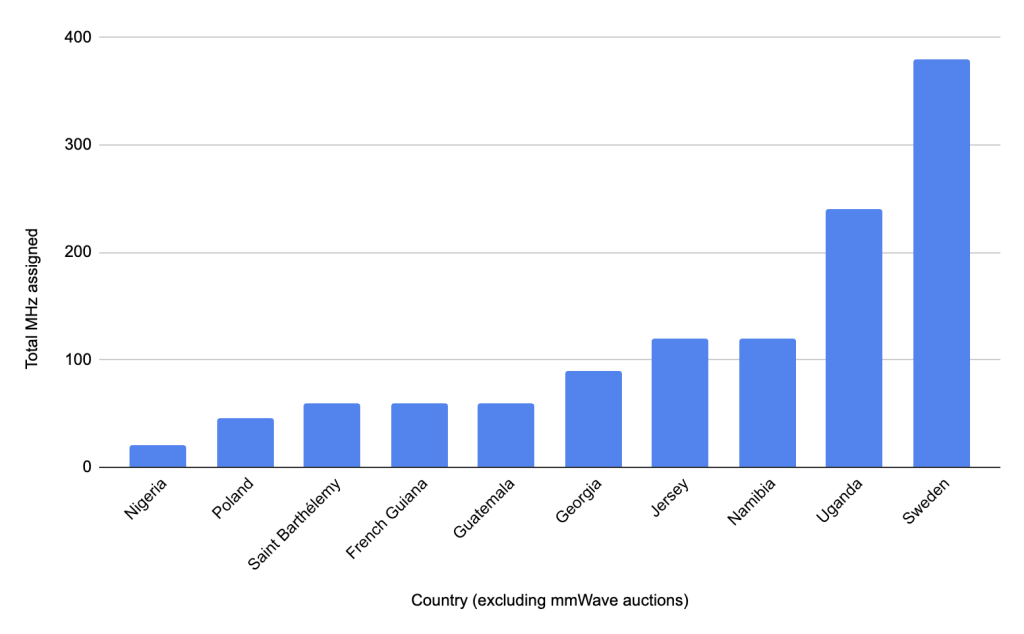700 MHz band remains popular worldwide
The latest quarterly update of the PolicyTracker Spectrum Database suggests that sub-1 GHz spectrum remains critical for mobile operators.
Despite the recent trend of moving to higher spectrum bands, the 700 MHz band remains popular for day-to-day mobile deployments.
In the past three months, PolicyTracker has recorded 700 MHz assignments in seven territories. The band has been assigned in Jersey, Georgia, Guatemala, Saint Barthelemy, Namibia and Uganda.
The 800 MHz and 900 MHz bands also remain popular, having both been assigned in two counties in recent months.
These trends suggest that sub-1 GHz spectrum remains essential for mobile operators across the world, even as the forward-looking mobile industry is eyeing the 7-24 GHz range and considering deploying future mobile technologies in the sub-terahertz (THz) frequency range.
The mobile industry has frequently emphasised the importance of sub 1-GHz spectrum. The GSMA says sub 1-GHz spectrum carries a disproportionate amount of traffic compared to other bands and has warned of a possible capacity crunch if insufficient low band spectrum is made available to operators.

The latest edition of the PolicyTracker Spectrum database includes spectrum assignments in nine bands from over 12 different territories.
In terms of total bandwidth, Bulgaria and Israel are tied for first place, with both assigning exactly 1600 MHz in the 26 GHz band. The second biggest spectrum award took place in Sweden, where a total of 380 MHz of spectrum went to operators in the 900 MHz, 2.1 GHz and 2.6 GHz bands.

Various other updates and improvements were also made to existing entries in the database, including taking account of recent operator re-brands in Georgia and Bulgaria.
The PolicyTracker Spectrum Database tracks allocations, assignments and prices paid for spectrum. It is available in Google Sheets, as an Excel document, and on our website. It is updated quarterly and is available as part of the Spectrum Research Service.
